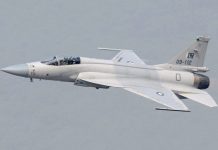ISLAMABAD: Pakistan needs to update the national accounts on a regular basis — ideally every five years — to truly reflect the structural changes occurring to the economy overtime, to get a true picture of the gross domestic product, and to set the future economic growth targets accordingly, WealthPK reported.
The National Accounts series is rebased when the old base year is replaced with a new or more current base year for computing constant price estimates.
A ‘base year’ is a reference year that is used to represent the whole of economic activity.
The International Monetary Fund advises that nations develop benchmark GDP estimates or rebase their national accounts every five to 10 years, with five years being the preferred interval.
National income accounting is a time-consuming process that involves calculating and then aggregating the value contributed by all economic activities to get estimates of national revenue for a given year.
The benchmark year should also be a normal year (i.e., there should be no economic shocks or brief aberrant shifts in consumption or output owing to exogenous or endogenous shocks) and completely capable of capturing structural changes that happened between the two reference periods.
Countries frequently utilise these benchmark estimations as weights in aggregated indices; the normality criterion for the benchmark year is critical. These weights are frequently fixed for a set amount of time. If the weights are exceptional, the aggregate findings in later years may underestimate or exaggerate growth rates.
A majority of Asian countries, particularly Bangladesh, China, India, Indonesia, Malaysia, the Philippines, Sri Lanka, Thailand and Vietnam rebase their accounts every 10 years, whereas Korea and Singapore do the same every five years. However, as seen in the table, some countries rebase even more regularly.
Pakistan’s first rebasing exercise took place in 1959-60 and lasted until 1980-81. During this time, all structural changes were never recorded. In 1999-2000, a second rebasing exercise was conducted with a two-decade lag. This was followed by a second rebasing in 2005-06, with the decision to repeat it every 10 years.
The most recent rebasing was carried out in January 2022 after 10 years with 2015-16 the new benchmark year.
The next rebasing is likely in 2025.
Rebasing efforts are timed to coincide with data gathering activities that need a lot of resources, such as censuses, enterprise surveys, household surveys, government and other administrative sources.
The Pakistan Bureau of Statistics employed administrative studies from provincial and federal governments to undertake over 40 studies and censuses for the most recent rebasing operation, the most important of which was the Census of Manufacturing Industries (CMI). Moreover, this research was also scrutinised and reviewed by national and international specialists.
The most recent rebasing effort clearly had an influence on numerous macroeconomic indicators, expanding their coverage to developing industries. In comparison to the 2005-06 base year, real GDP expanded by Rs3.1 trillion in 2015-16. However, the percentage of agriculture in GDP decreased, while services climbed and industry’s share of GDP increased significantly. The rebasing effort has boosted the size of the GDP in both constant and current prices, as well as in dollar terms because of the sector’s improved coverage.
While celebrating the new GDP growth rate, there is a need to immediately address inflation, particularly in the food sector. To ensure sustained growth, monetary policy instruments must be used judiciously to stabilise prices, boost exports, and foster an investment climate. Exports must be boosted by promoting special economic zones and diversifying supply chains.
INP






